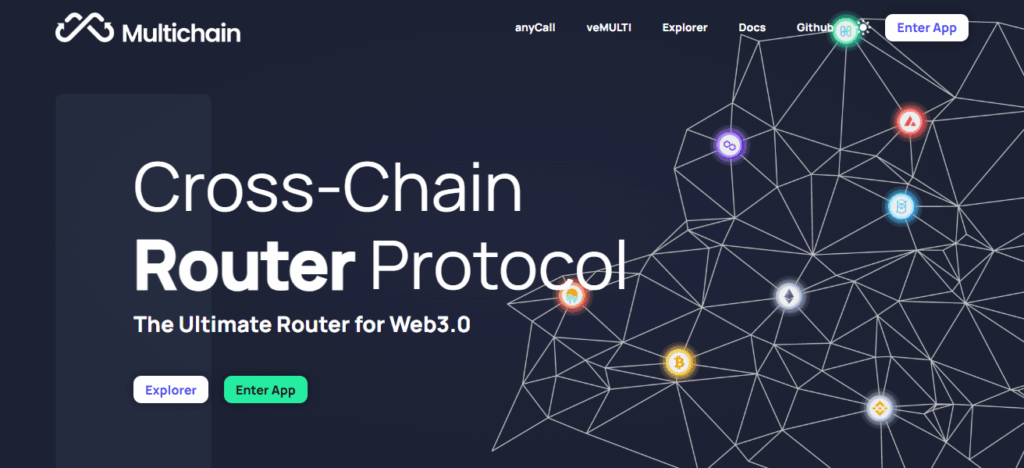This article will focus on the most effective methods of determining whether a bridging aggregator is a scam. The convenience of cross-chain transactions enables any blockchain to interact freely with any other blockchains.
Regretfully, scam artists will always find inventive ways to exploit naive users. This article will delve into the most vital fraudulent activities and essential tools to determine the credibility of bridging aggregators, as well as proactive measures to safeguard your money.
What Are Bridging Aggregators?
Bridging aggregators are vital consolidators that enhance connectivity of various blockchain networks which allow cross-chain transactions with ease.
Instead of tediously transferring assets across several chains, users can easily relocate assets with aggregators who will take the best routes within their transfers.
They will multi source liquidity and bridges, and optimize based on fees, performance, and success. Successful bridging aggregators are useful for users making cross-chain transactions at lower fees.
As user base gain, scammers are taking advantage of this and basic research is essential before utilizing.
How To Identify Bridging Aggregator Scams
Example: How To Identify Bridging Aggregator Scams
A good example is Multichain aka AnySwap. One of the well-known bridging aggregators. While Multichain is a reputable service, many scammers will try to fabricate a version of their smart contracts, websites, or even the service itself to scam unaware users.

Indicators of a potential scam:
Typokojdod the url: These websites are often titled with a few typos or filler words with contact domains….like multichain-xyz.com.
Smart Contract verification: Use any blockchain explorer to verify if the contract is associated with the correct domains.
Audit reports: Scams will claim to have verifiable audits, but reputable platforms lacking scams will always have at least one audit from a respectful firm.
Community Feedback: Search Discord, forums, or Telegram for flags on stolen identities and other malicious links.
**Links or airdrops you were not expecting. **Fake Multichain Giveaways are advertised a lot and the goal is to steal funds from unknowing victims.
Common Types of Scams in Bridging Aggregators

Aggregator Impersonation
Sites disguised as legitimate aggregators implement tactics like URL and logo distortion. Users’ wallet feeds and sacred keystones are captured, and funds are taken like a thief in the night, never to be returned.
Fraudulent ‘Smart’ Contracts
‘Smart’ Contracts that are not legitimate appear as if they are in working order, but in the end, they siphon tokens. Casual heresay active checks will tell these tokens are taken, never returned.
Social Media and Community Channel Shadow Attacks
Scammers impersonate official support on social media and communication services like Telegram, Discord, and Twitter Filling out their ‘support’ they promise fake airdrop and fake giveaways, tricking receivers to shoot their private tokens.
Keeping the Chain Broken
Some aggregators bend the rules to make it seem that users are working the machine, using redundant work. Slippage, choke fees, and needless custody loss are thrown, so working users beware and be sorry.
Red Flags To Watch Out For

Lacking Website or app Transparency About Developers: Websites hiding team members means possible fraud; it is bad if one cannot authenticate it or track losses.
Smart Contracts Not Verified or Code Un-audited: Contracts without audits are bad; vulnerabilities which thieves exploit to access must be paid.
Too Much Advertising or Return is Too Good: High gain returns or too quick offers are scams and attempt to lure users into dangerous deals.
Private Keys or Seed Phrase Requests: Real platforms will never ask for them. Sharing them will give scammers access to funds and wallets.
Domain Changes with no notice: Changes with no notice for contracted links and domains for social media may be impersonation and phishing to scam users.
Tools and Methods To Verify Legitimate Aggregators

Confirming Smart Contract Audits
Always check for CertiK or PeckShield audits. Audits pinpoint vulnerabilities and security risks, proving that best security practices are followed, and thus, reduces risks of malicious behavior.
Searching through Blockchain Explorers
Etherscan and BscScan aids user in locating and monitoring contraction addresses along with transaction histories and token movements. Optically, routine and clear associations emphasizes authenticity while odd or new contracts caution the user.
Reviewing Community Feedback
Seek verified user reviews on trusted cryptocurrency forums, Discord servers, or Telegram groups. Verified users frequently post scam alerts and warnings that serve as early indications of malicious activities perpetrated by aggregators.
Confirming from Another Source
Check the mentioned partnerships on the official website of the project and on the social media handles of the project. Most legitimate aggregators partner with reputable projects. This adds authenticity and lowers chances of scam.
Prove It” with Smaller Transactions
Try to send smaller amounts of crypto before sending bigger amounts. This useful strategy to check if funds are easily transferrable without being lost to unwanted issues like spending scam and unwanted hidden fees.
Pros And Cons
| Pros | Cons |
|---|---|
| Helps protect your crypto funds from theft and scams. | Requires time and effort to research platforms, contracts, and community feedback. |
| Encourages due diligence and safer cross-chain transactions. | Can be overwhelming for beginners due to technical details like smart contracts and audits. |
| Identifying scams builds awareness of phishing, fake sites, and malicious links. | Even with precautions, some sophisticated scams may still slip through. |
| Improves knowledge of legitimate platforms and reputable aggregators. | Frequent monitoring of updates, domain changes, or social media links is needed. |
| Reduces risk of falling for fake promotions, airdrops, or impersonations. | Small test transactions can incur minor fees or delays. |
Conclusion
In closing, bridging aggregator scams come down to careful attention, smart contracts, audits, user reviews, feedback, and avoiding scams linked to dubious offers and suspicious links can protect funds.
Users should also employ small test transactions to know about things they need to avoid. Instruction also helps avoiding slippages and ensures assets are better protected from fraud. Safe crossings maintain trust and confidence in crypto transactions.
FAQ
A platform that facilitates cross-chain crypto transfers by connecting multiple blockchains for easier and optimized transactions.
Commonly as fake websites, malicious smart contracts, impersonation on social media, or deceptive promotions.
Use blockchain explorers like Etherscan and check for verified addresses and audit reports from reputable firms.
Yes—requests for private keys, unaudited contracts, suspicious domains, aggressive promotions, and unexpected token changes.
Yes, checking forums, Discord, Telegram, and Reddit can reveal scam warnings and experiences from other users.



